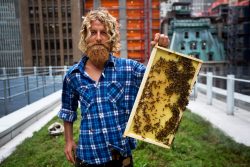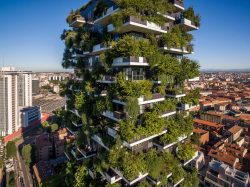Concrete, stone, high-rise, pollution, dust… this seems to be the reality of our cities, villages and country. In some parts of our country when you look around all you can see is one uninterrupted stretch of buildings. Even our children are brought up in schools away from nature.
It seems as if we have no cure for this construction virus that has taken over our country. We are building everywhere, beneath, besides, above and further above. There are many considerations on this cancerous spread that are not just environmental. Some economists have concerns on what happens to the value of property if something happens to the gaming and financial sectors. Do we see the value of all our property go down the drain? Who will pay the price for this, developers or individual home owners?
There are also many environmental considerations and BirdLife Malta has taken a stand on various development proposals. Unfortunately, irrespective of our campaigning and that from other eNGOs, local councils and residents, we are still seeing more applications and approvals for more development, as well as high-rise buildings or towers across the island. Whilst we are locally seeing the effects of a concrete landscape, in other countries such as China, the first vertical forests are being built. In China, the Nanjing Towers designed by Italian architect Stefano Boeri, will produce 60 kilos of oxygen everyday, housing over 100 trees and 2,500 shrubs once completed in 2018
Maybe some might take some inspiration; if we have to see a long finger sticking up from the ground, it should at least be covered in green!
Making our property greener can take other forms as well. Unfortunately we have a tendency to limit the use of our roofs and terraces. Some commercial properties’ roofs are at best used to hold solar panels. Roofs are often considered as wasted space, when they should be considered as gardens. A University of Malta project ‘Life Med Green Roof’ demonstrates the environmental but also energy benefits of roof gardens. Companies can use their roof gardens to reduce their energy bills, but also as a place where staff can relax. At the same time, these roof gardens (if correctly done) can be home to plants, butterflies, lizards, birds, and much more!

Mike Densham, of Brooklyn Grange, with part of a bee hive on a rooftop (Photo by Demetrius Freeman/The New York Times)
Interestingly, roof gardens in New York have become a hub for bees since the ban on beekeeping made during the Giuliani administration was lifted. This trend has spread to other cities including London where there is now an increasing concern as to whether the city has enough bee-friendly plants.
In Canada, the charming Justin Trudeau (Prime Minister) has recently opened another 63,000 square feet of rooftop greenhouses by Lufa Farms that feeds Montreal with food grown on its rooftops. In Tel Aviv, entrepreneurs are using hydroponic methods to grow vegetables on top of the Dizengoff Centre (a shopping mall).
Another important aspect of greening our cities are schools. BirdLife Malta has been working for some time on an initiative called Ġonna Dinja Waħda (One World Gardens). The aim is to put nature into schools and to get our kids to directly engage with the environment. This is obviously more than just planting a couple of trees. Hopefully this can be the future of our schools, rather than multi-coloured concrete grounds.
By Darryl Grima, BirdLife Malta President

